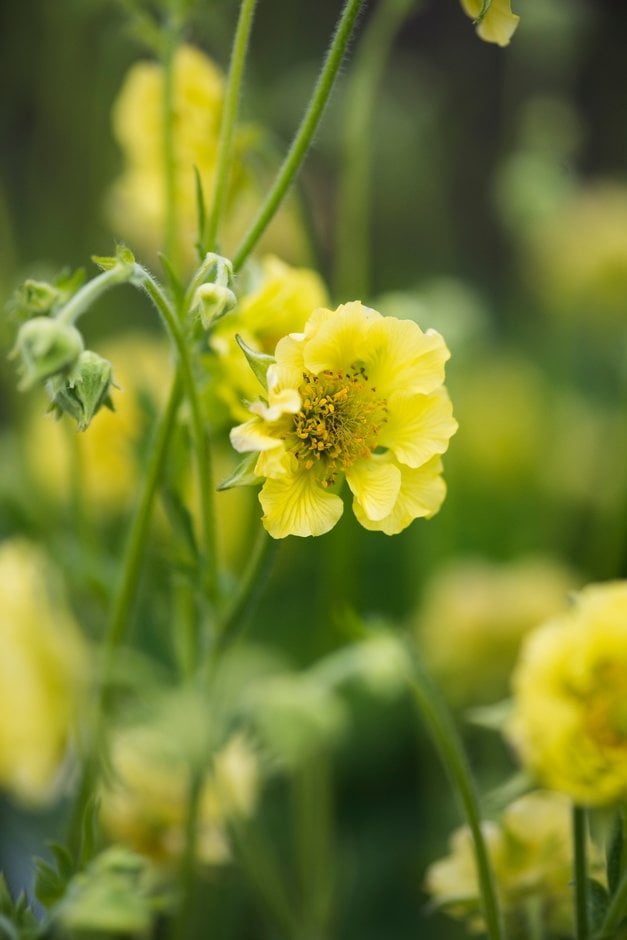Size
Ultimate height
0.1–0.5 metresTime to ultimate height
2–5 yearsUltimate spread
0.1–0.5 metresGrowing conditions
Moisture
Moist but well–drained, Well–drainedpH
Acid, Alkaline, NeutralColour & scent
| Stem | Flower | Foliage | Fruit | |
| Spring | Yellow | Green | ||
|---|---|---|---|---|
| Summer | Yellow | Green | ||
| Autumn | Green | |||
| Winter |
Position
- Full sun
Aspect
West–facing or South–facing or East–facing
Exposure
Exposed or Sheltered Hardiness
H7Botanical details
- Family
- Rosaceae
- Native to GB / Ireland
- No
- Foliage
- Deciduous
- Habit
- Clump forming
- Genus
Geum are rhizomatous perennials, occasionally spreading by stolons, with a basal rosette of pinnately lobed leaves and saucer-shaped flowers in loose clusters
- Name status
Accepted
How to grow
Cultivation
Grow in fertile, well-drained soil in full sun. Divide every three years or so to maintain vigour and flowering
Propagation
Propagate by division in spring or autumn
Suggested planting locations and garden types
- Gravel garden
- Cottage and informal garden
- Patio and container plants
- Flower borders and beds
Pruning
Deadhead to promote more blooms, and cut back old stems after flowering
Pests
May be susceptible to geum sawfly
Diseases
Generally disease-free
Love gardening
Sign up to receive regular gardening tips, inspiration, offers and more
View our Privacy Policy
Get involved
The Royal Horticultural Society is the UK’s leading gardening charity. We aim to enrich everyone’s life through plants, and make the UK a greener and more beautiful place.

